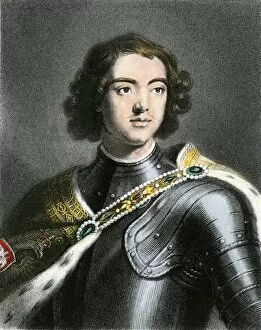Tzar Collection (#9)
The term "tzar" carries a rich history and significance in Russian culture
All Professionally Made to Order for Quick Shipping
The term "tzar" carries a rich history and significance in Russian culture. From the powerful reign of Peter I, the Great, depicted in an oil painting at Deptford Dockyard in 1857, to the grandeur of The Entrance of the Emperors into Paris captured on paper, these images showcase the might and influence of the tsars. One cannot overlook significant moments like the Crowning of Nicolas I or the Napoleonic war of 1812, where Napoleon's retreat from Moscow was overseen by the imperial Russian two-headed eagle and Tsar Alexander I. These events symbolize both power and resilience. Looking further back in time, we encounter Michael I, who reigned as Tzar from 1613 to 1645. His rule marked a turning point for Russia after years of political turmoil. Moving away from politics but still encapsulating majesty is The Tzar Bell located in Moscow. This Victorian-era masterpiece stands as a testament to craftsmanship and serves as a reminder of Russia's cultural heritage. Another glimpse into this heritage can be seen through The Tzar's Troika - a traditional Russian carriage that embodies elegance and grace. Its presence evokes images of royal journeys across snowy landscapes. Lastly, we have an intimate snapshot capturing family life with Tsar Nicholas II photographed alongside his loved ones in 1905. This black-and-white photo allows us to glimpse behind closed doors into their personal world amidst turbulent times. Whether it be through historical paintings or iconic landmarks like The Tzar Bell or troikas gliding through snow-covered landscapes, these glimpses into tzardom provide us with insight into Russia's past glory and its enduring legacy.


















